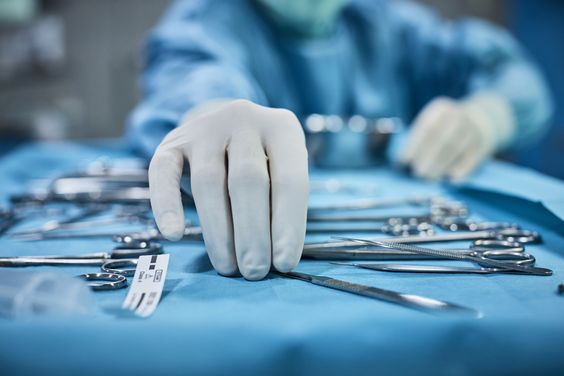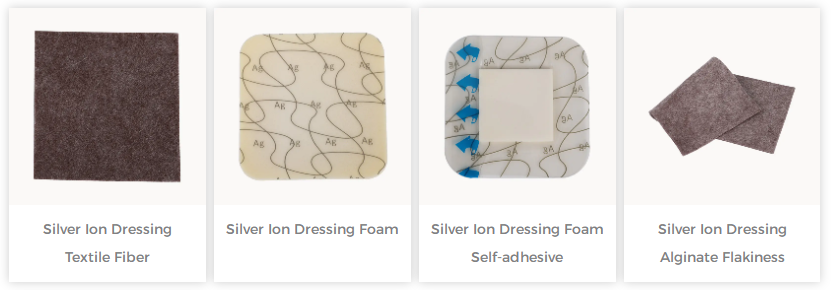Wounds tend to have foreign matter residues, so it is easy to cause infection, especially for chronic wounds, which will not only affect the healing of the wound but also cause systemic infection and even endanger the life of the patient in severe cases. Debridement is the complete removal of foreign bodies in the wound, excision of necrotic tissue, and initial suturing to prevent hemostasis. The principle of debridement is to carry out the wound with contamination or foreign matter. The sooner the better after the injury, try to do it within 6-8 hours. Wound debridement treatment includes wound washing and disinfection, routine debridement, wound sutures, wound disinfection, dressing, and antibiotic anti-infection treatment. This article will answer some questions about wound debridement, please take a look with me below.
Why does my wound have to be debrided?
1. The necrotic tissue on the wound can trap bacteria, which may cause wound infection, and bacteria can also cause odor. So removing it can make the wound heal faster.
2. Wounds with necrotic tissue take longer to heal. It causes new tissue to fail to grow. And the dead tissue can hide pockets of pus, which can develop into infections.
3. Wound infection will prevent healing. And in severe cases, it can be life-threatening
4. Regular removal of necrotic tissue can keep it clean. Not only does it help your wound grow new tissue, but it also makes your wound heal faster.
are the methods of wound debridement?
1. When cleaning sterile wounds: Rotate and wipe from the center of the wound outward, and the sterile cotton ball or swab must be discarded after one week of the rotation, and cannot be wiped back and forth. Repeat this action until the wound secretions are clear, from the mouth itself to the outer 5cm of the wound.
2. Infected wounds: clean infected wounds from the outside to the inside, use non-irritating cleansers to the tissue, and do deeper cleaning according to the situation: fresh ruddy granulation tissue does not need to be cleaned or rinsed with disinfectants, Excessive granulation hyperplasia is usually applied with pressure dressing, and mechanical debridement can be used for black scab and large necrotic tissue, such as removal with scissors, curette or scalpel. Among the three instruments, a scalpel is preferred, because scissors and curettes are easy to damage normal tissue, and a small amount of necrotic tissue can be removed with debridement dressing; hydrophilic dressing can also help soften the tumor shell, and mechanical removal of necrotic tissue is helpful. The very good auxiliary effect can significantly reduce bleeding.
3. Cavities or sinuses: Rinsing with a mild, non-irritating cleaning solution (such as normal saline) can achieve a good cleaning purpose.
4. Chronic wounds can be debrided once a week. This process immediately stimulates the platelets, which begin to take over the wound space. This is called an inflammatory process, and it begins to transform a chronic wound into an acute wound. During the first 48 hours, healing is controlled by platelet-derived growth factor (PDGF) and modified growth factors. Circulating monocytes later become tissue macrophages, which then provide multiple growth factors for healing.
in conclusion:
In general, multiple debridement methods are used in combination to promote faster healing times. Not all wounds are suitable for debridement. Sharp debridement is the most aggressive approach, while autolysis is less aggressive. An enzymatic approach helps stagnant wounds pass the inflammatory phase. The patient's health status wound infection, wound size, wound exudate, and wound location should be considered when determining the best plan of care to achieve therapeutic goals. Debridement and wound healing can occur simultaneously, so measures to speed up the healing process should always be taken.
For more information on Innomed® silver lon dressing, refer to the previous articles. If you have customized needs, you are welcome to contact us; we will serve you wholeheartedly.
At Longterm Medical, we transform this data by innovating and developing products that make life easier for those who need loving care.
Editor: kiki Jia
Date: November 16, 2022

 English
English عربى
عربى Español
Español русский
русский 中文简体
中文简体








